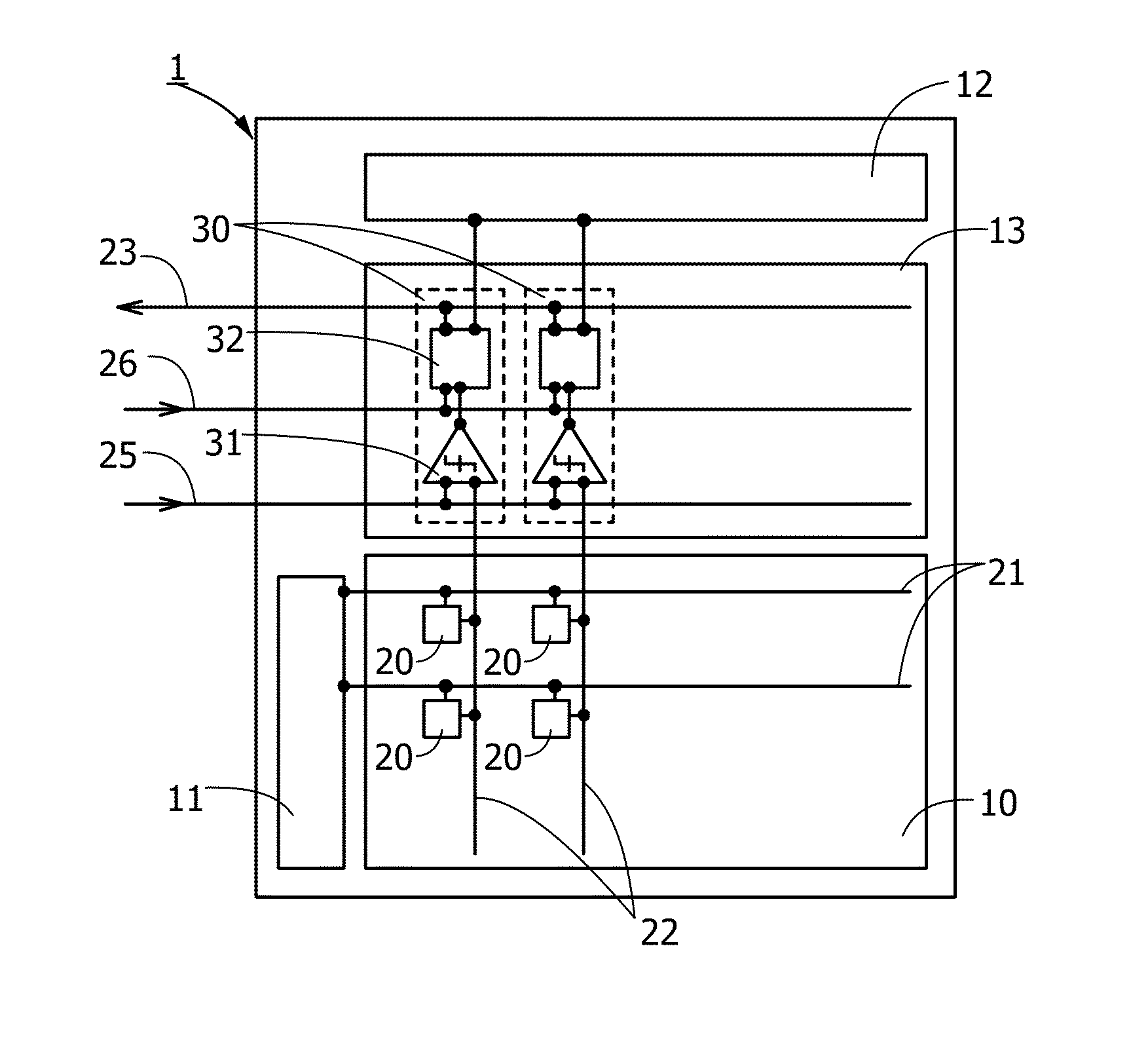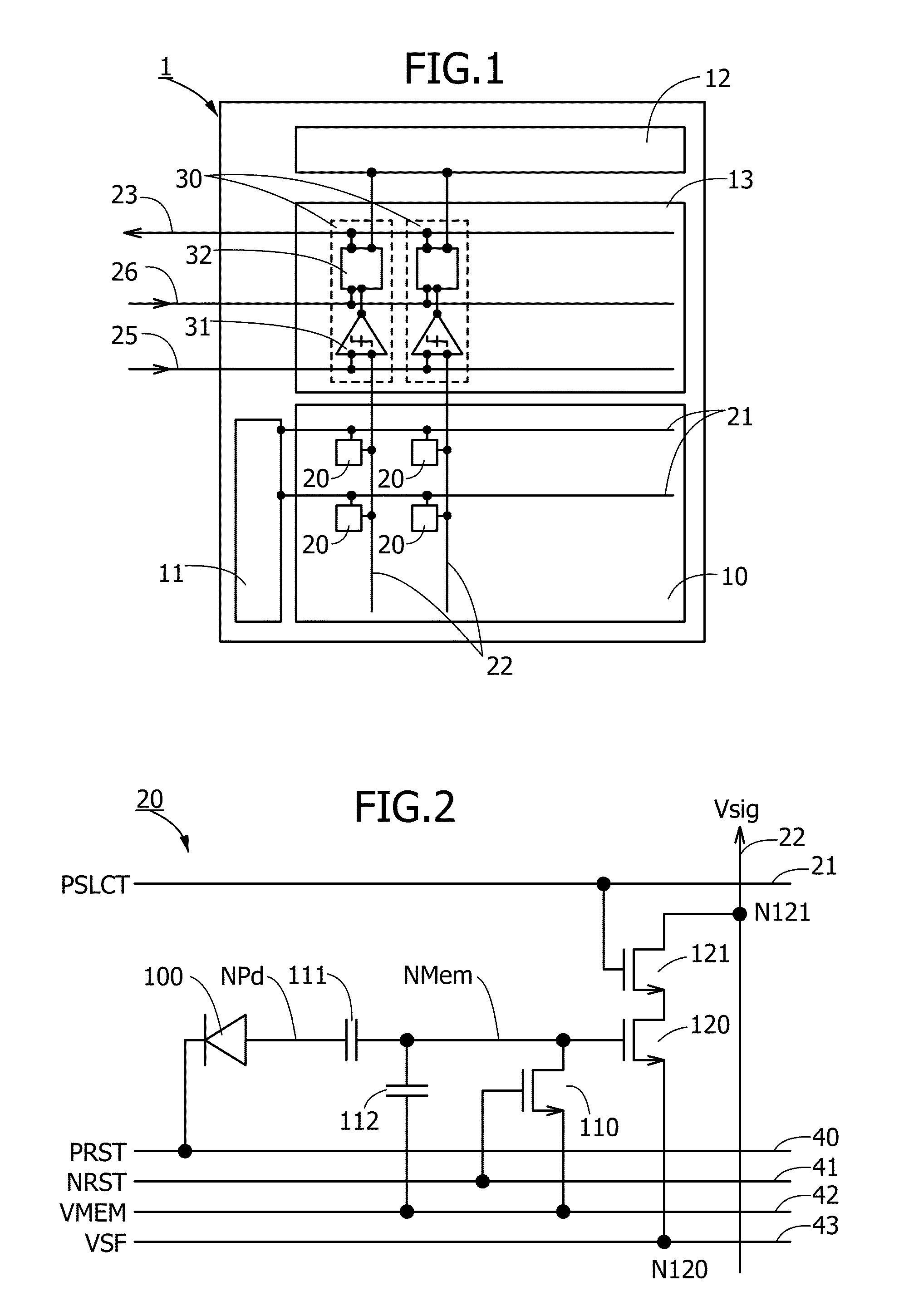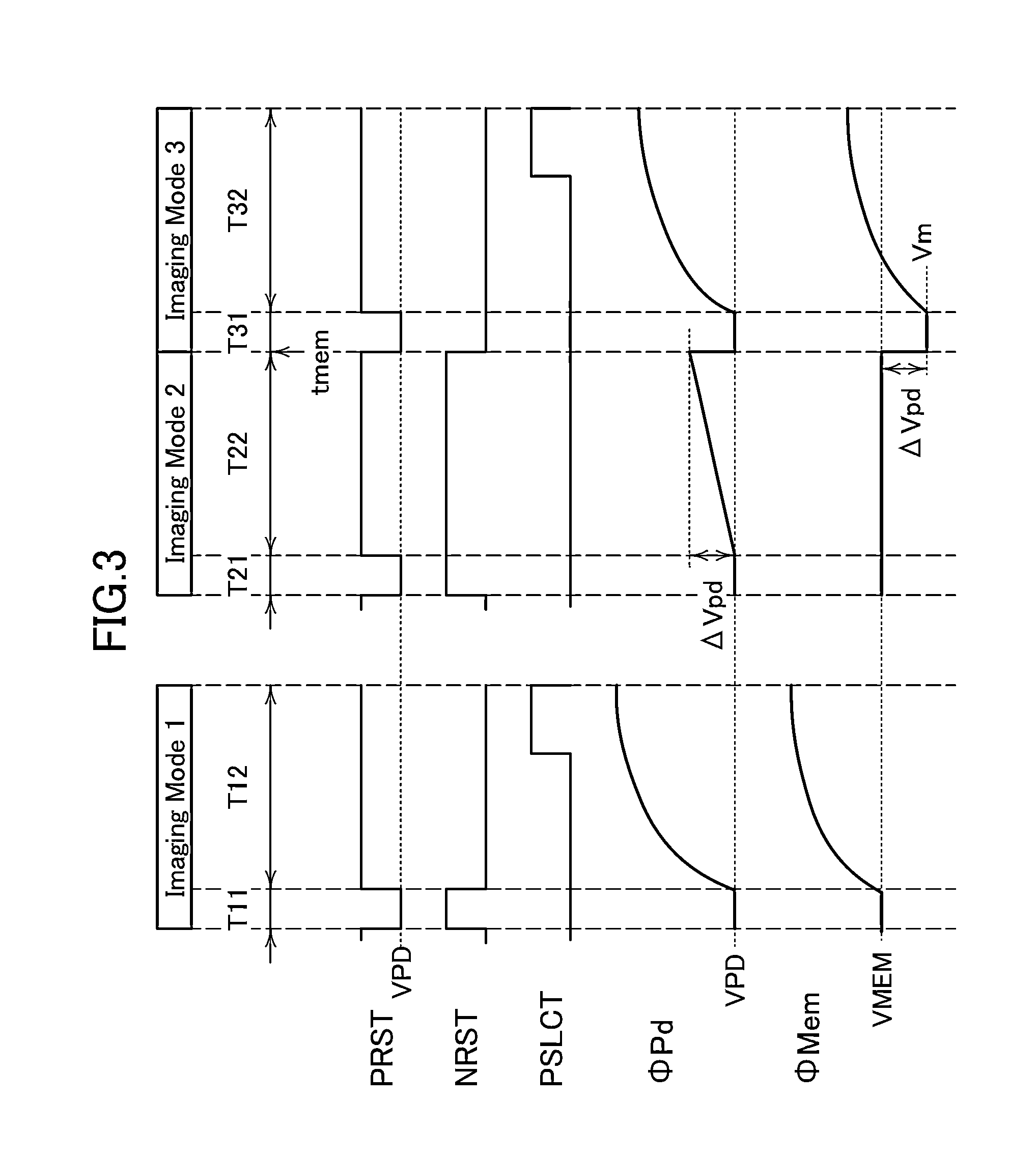Image sensor, camera, surveillance system, and method for driving the image sensor
a technology of image sensor and camera, which is applied in the direction of color television, solid-state devices, television systems, etc., can solve the problems of affecting the resolution increase, the circuit size of the pixel becomes large,
- Summary
- Abstract
- Description
- Claims
- Application Information
AI Technical Summary
Benefits of technology
Problems solved by technology
Method used
Image
Examples
embodiment 1
[0036]In this embodiment, an image sensor is described as an example of a semiconductor device with reference to FIG. 1, FIG. 2, FIG. 3, FIG. 4, FIG. 5, and FIG. 6.
[0037]FIG. 1 illustrates an example of a configuration of an image sensor 1 of this embodiment. The image sensor 1 includes a pixel array 10, a vertical shift register 11, a horizontal shift register 12, and a reading circuit 13.
10>
[0038]The pixel array 10 includes a plurality of pixels 20, selection signal lines 21 each of which is provided per row, and vertical signal lines 22 each of which is provided per column. The pixels 20 are arranged two-dimensionally in a matrix. The pixels 20 at one row are electrically connected to the vertical shift register 11 through one selection signal line 21, and the pixels at one column are connected to the reading circuit 13 through one vertical signal line 22. The vertical shift register 11 is a circuit which controls scanning of the columns of the pixel array 10, and the selection s...
embodiment 2
[0098]In this embodiment, another configuration example of the pixel 20 is described. In this embodiment, a pixel for realizing an image sensor using a global shutter method is described with reference to FIG. 8 and FIG. 9.
50>
[0099]FIG. 8 is a circuit diagram illustrating an example of a configuration of a pixel 50 of this embodiment. The pixel 50 is different from the pixel 20 in that a switch for controlling electrical conduction between the photodiode 100 and the capacitor 111 is provided. In the pixel 50, a transistor 150 is provided as the switch. A gate of the transistor 150 is connected to a wiring 51, a source of the transistor 150 is connected to an output (an anode) of the photodiode 100, and a drain of the transistor 150 is connected to one electrode of the capacitor 111. The wiring 51 is a signal line to which a charge transmission control signal PTR (hereinafter referred to as a signal PTR) for controlling ON / OFF of the transistor 150 is input.
[0100]Note that although t...
embodiment 3
[0106]As described above, in the image sensor disclosed in this specification, each pixel can detect a difference in potential between optical signals in two different frames, and can detect a difference in potential between optical signals of not only successive two frames but two frames one of which is two or more frames before the other. Further, the detection accuracy of the difference in potential depends on the charge holding capability of the node (NMem) which functions as a memory of the potential memory circuit.
[0107]For example, in the pixel 20 where the leakage current of the transistor 110 at room temperature is approximately 1×10−14 A and the capacitance of the capacitor 112 is approximately 100 f F, when the frame rate is 60 fps, on the assumption that the potentials of the wirings other than the node NMem do not change, a period during which electric charge (potential) can be held at the node NMem is approximately one frame period ( 1 / 60 second).
[0108]Now, in this emb...
PUM
 Login to View More
Login to View More Abstract
Description
Claims
Application Information
 Login to View More
Login to View More - R&D
- Intellectual Property
- Life Sciences
- Materials
- Tech Scout
- Unparalleled Data Quality
- Higher Quality Content
- 60% Fewer Hallucinations
Browse by: Latest US Patents, China's latest patents, Technical Efficacy Thesaurus, Application Domain, Technology Topic, Popular Technical Reports.
© 2025 PatSnap. All rights reserved.Legal|Privacy policy|Modern Slavery Act Transparency Statement|Sitemap|About US| Contact US: help@patsnap.com



